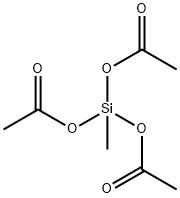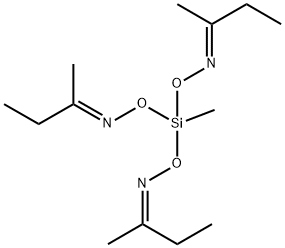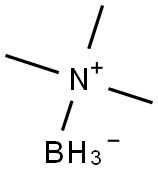(Trifluoromethyl)trimethylsilane
Synonym(s):(Trifluoromethyl)trimethylsilane;Trifluoromethyltrimethylsilane;TFMTMS;Ruppert-Prakash reagent;Ruppert′s reagent
- CAS NO.:81290-20-2
- Empirical Formula: C4H9F3Si
- Molecular Weight: 142.2
- MDL number: MFCD00145454
- SAFETY DATA SHEET (SDS)
- Update Date: 2025-09-25 17:15:13

What is (Trifluoromethyl)trimethylsilane?
Description
Trifluoromethyltrimethylsilane (TMSCF3) is a fluorinated derivative of tetramethylsilane (TMS), the Molecule of the Week for March 29, 2021. Like TMS, TMSCF3 is a volatile liquid; but the fluorinated compound is considerably more reactive and hazardous.
TMSCF3 is not synthesized from TMS; rather, it is formed by coupling molecules containing trifluoromethyl and trimethylsilyl groups. The initial synthesis, by Ingo Ruppert*, Klaus Schlich, and Wolfgang Volbach at the University of Bonn (Germany) in 1984, involved the reaction of bromotrifluoromethane (CBrF3)?and trimethylsilyl chloride (TMSCl) in the presence of an amine–phosphorus catalyst.
Similar methods followed over the next several years, culminating in one reported by G. K. Surya Prakash*, Ramesh Krishnamurti, and George A. Olah*1 at the University of Southern California (Los Angeles) in 1989 that does not require ozone-depleting reagents such as CBrF3. Instead, the researchers treated fluoroform (CHF3) with TMSCl and the base potassium hexamethyldisilazide to obtain TMSCF3 in 80% isolated yield.
Ruppert and Prakash prepared TMSCF3 because they had bigger things in mind. Specifically, they sought to introduce a reagent that could easily add the trifluoromethyl group to a wide range of organic substrates. Now known as the Ruppert–Prakash reagent, TMSCF3 has been used to add CF3 or the difluoromethylene group to aldehydes, ketones, olefins, alkynes, heterocyclic systems, and more.
In 2014, Mang Wang, Qun Liu, and colleagues at Northeast Normal University (Changchun, China) published an excellent review of TMSCF3 chemistry. So much work is being done with TMSCF3 that, even after the conclusion of the review, the authors felt compelled to add an additional section that reported findings that appeared after the original manuscript was submitted for publication.
1. Olah received the Nobel Prize in Chemistry in 1994 for his work on superacids and carbocations.
Chemical properties
(Trifluoromethyl)trimethylsilane (TMSCF3) is a flammable colorless liquid with a boiling point of 54–55 °C, a flash point of –17 °C and density of 0.926 g/mL at 20 °C. It is a trifluoromethylation reagent used in nucleophilic addition reactions of aldehydes and ketones. It may be harmful if inhaled, swallowed, absorbed through skin and may cause respiratory tract, skin and eye irritation. TMSCF3 was firstly synthesized by Rupert in 1984 via the condensation reaction of CF3Br and TMSCl with (Et2N)3P.
The Uses of (Trifluoromethyl)trimethylsilane
TMSCF3 is versatile reagent for trifluoromethylation, such as transition-metal-catalyzed reaction, miscellaneous trifluoromethylation, and addition to carbonyl and imine groups. These reactions are extremely useful approaches in the pharmaceutical and agrochemical industry, because they enhance metabolic stability (metabolic blocking) and alter the compound properties (liphophilicity, binding selectivity).
The Uses of (Trifluoromethyl)trimethylsilane
Silicon-based fluorinating reagents for the efficient trifluoromethylation of carbonyls and ethylene diamines. Precursors used for metal-mediated trifluoromethylation of aromatic, heteroaromatic, vinyl substrates, etc.
What are the applications of Application
Trimethyl(trifluoromethyl)silane solution is an organometallic reagent
Preparation
(Trifluoromethyl)trimethylsilane is prepared from trimethylsilyl chloride and bromotrifluoromethane in the presence of a phosphorus(III) reagent that serves as a halogen acceptor.
General Description
Trimethyl(trifluoromethyl)silane (TMSCF3) is also called as Ruppert-Prakash fluorination reagent. It is extensively used for the synthesis of trifluoromethyl-containing compounds.
Toxicology
(Trifluoromethyl)trimethylsilane is classified as toxic and requires careful handling and safety protocols to minimize human exposure. Prolonged or repeated exposure can lead to various health problems such as skin, eye, and respiratory irritation.
Purification Methods
Purify it by distilling it from trap to trap in a vacuum of 20mm using a bath at 45o and Dry-ice/Me2CO bath for the trap. The liquid in the trap is then washed with ice cold H2O (3x), the top layer is collected, dried (Na2SO4), and the liquid is decanted and fractionated through a helices-packed column at atmospheric pressure. 1H, 1 3C, 1 9F, and 2 9Si NMR can be used for assessing the purity of fractions. [Ruppert et al. Tetrahedron Lett 25 2195 1984, Krishnamurti et al. J Org Chem 56 984 199, Beilstein 4 IV 3892.]
Properties of (Trifluoromethyl)trimethylsilane
| Boiling point: | 54-55 °C (lit.) |
| Density | 0.962 g/mL at 20 °C (lit.) |
| vapor pressure | 10.98 psi ( 55 °C) |
| refractive index | n |
| Flash point: | 14 °F |
| storage temp. | 2-8°C |
| solubility | sol THF, ether, CH2Cl2. |
| appearance | colorless liquid |
| form | Liquid |
| color | Clear colorless |
| Specific Gravity | 0.962 |
| Water Solubility | Soluble in alcohol, THF, ether, dichloromethane, aromatic and aliphatic hydrocarbons. Soluble in water(with white smokes). |
| Sensitive | Moisture Sensitive |
| Hydrolytic Sensitivity | 4: no reaction with water under neutral conditions |
| Merck | 14,9683 |
| BRN | 4241868 |
| Exposure limits | ACGIH: TWA 50 ppm; STEL 100 ppm (Skin) OSHA: TWA 200 ppm(590 mg/m3) NIOSH: IDLH 2000 ppm; TWA 200 ppm(590 mg/m3); STEL 250 ppm(735 mg/m3) |
| Stability: | Volatile |
| CAS DataBase Reference | 81290-20-2(CAS DataBase Reference) |
Safety information for (Trifluoromethyl)trimethylsilane
| Signal word | Danger |
| Pictogram(s) |
 Flame Flammables GHS02 |
| GHS Hazard Statements |
H225:Flammable liquids H261:Substances And Mixtures Which, In Contact With Water,Emit Flammable Gases |
| Precautionary Statement Codes |
P210:Keep away from heat/sparks/open flames/hot surfaces. — No smoking. P223:Keep away from any possible contact with water, because of violent reaction and possible flash fire. P233:Keep container tightly closed. P240:Ground/bond container and receiving equipment. P241:Use explosion-proof electrical/ventilating/lighting/…/equipment. P231+P232:Handle under inert gas. Protect from moisture. |
Computed Descriptors for (Trifluoromethyl)trimethylsilane
| InChIKey | MWKJTNBSKNUMFN-UHFFFAOYSA-N |
(Trifluoromethyl)trimethylsilane manufacturer
JSK Chemicals
ASM Organics
New Products
4,4-Difluoropiperidine hydrochloride tert-butyl 9-methoxy-3-azaspiro[5.5]undecane-3-carboxylate Indole Methyl Resin N-Isopropylurea N,N-Dicyclohexylcarbodiimide(DCC) MELDRUMS ACID 5-METHYLISOXAZOLE-4-CARBOXYLIC ACID Magnessium Bis glycinate Zinc ascorbate 1-bromo-2-butyne 2-acetamidophenol 9(10H)-anthracenone Erythrosin B, 4-Piperidinopiperidine 2-((4-morpholinophenylamino) (methylthio) methylene) malononitrile 2,4-dihydroxybenzaldehyde 3-(4-morpholinophenylamino)-5-amino-1H-pyrazole-4-carbonitrile Methyl 2-methylquinoline-6-carboxylate 2,6-dichloro-4-nitropyridine 4-Bromo-2-chlorobenzonitrile 2-(benzylamino)acetic acid hydrochloride 4-(tert-Butoxycarbonylamino)but- 2-ynoic acid 3,4-dihydro-2H-benzo[b][1,4]dioxepine 1-Phenyl-1-cycloprppanecarboxylicacidRelated products of tetrahydrofuran








You may like
-
 81290-20-2 Trimethyl(trifluoromethyl)silane 99%View Details
81290-20-2 Trimethyl(trifluoromethyl)silane 99%View Details
81290-20-2 -
 Trimethyl(trifluoromethyl)silane, 98% 99%View Details
Trimethyl(trifluoromethyl)silane, 98% 99%View Details -
![(Trifluoromethyl)trimethylsilane [Trifluoromethylating Reagent] CAS 81290-20-2](https://img.chemicalbook.in//Content/image/CP5.jpg) (Trifluoromethyl)trimethylsilane [Trifluoromethylating Reagent] CAS 81290-20-2View Details
(Trifluoromethyl)trimethylsilane [Trifluoromethylating Reagent] CAS 81290-20-2View Details
81290-20-2 -
 Trifluoromethyltrimethylsilane 98% CAS 81290-20-2View Details
Trifluoromethyltrimethylsilane 98% CAS 81290-20-2View Details
81290-20-2 -
 Trimethyl(trifluoromethyl)silane solution CAS 81290-20-2View Details
Trimethyl(trifluoromethyl)silane solution CAS 81290-20-2View Details
81290-20-2 -
 20677-73-0 (2,2-diethoxyethyl)methylamine 98%View Details
20677-73-0 (2,2-diethoxyethyl)methylamine 98%View Details
20677-73-0 -
 3-(4-(hydroxyamino)-1-oxoisoindolin-2-yl)piperidine-2,6-dione 98%View Details
3-(4-(hydroxyamino)-1-oxoisoindolin-2-yl)piperidine-2,6-dione 98%View Details -
 57381-49-4 2-bromo-4-chlorobenzonitrile 98%View Details
57381-49-4 2-bromo-4-chlorobenzonitrile 98%View Details
57381-49-4
